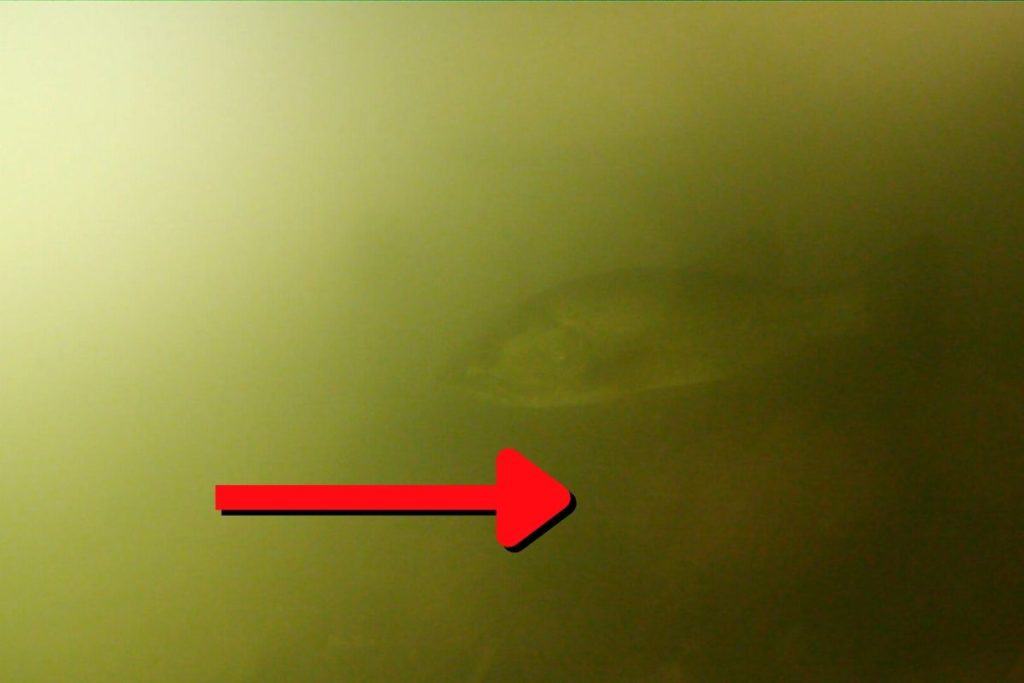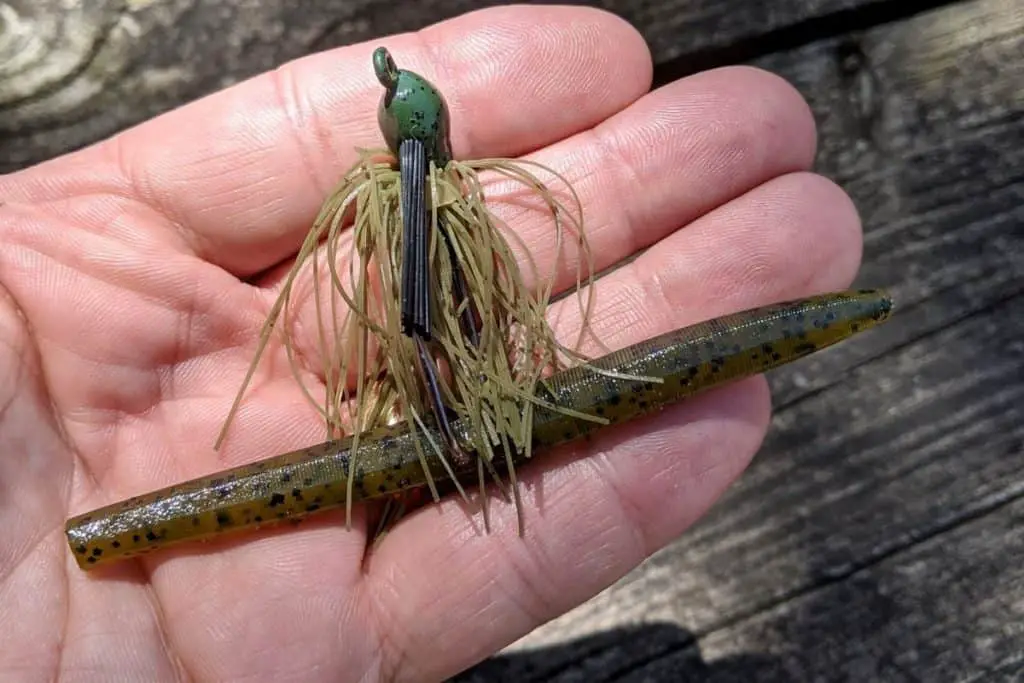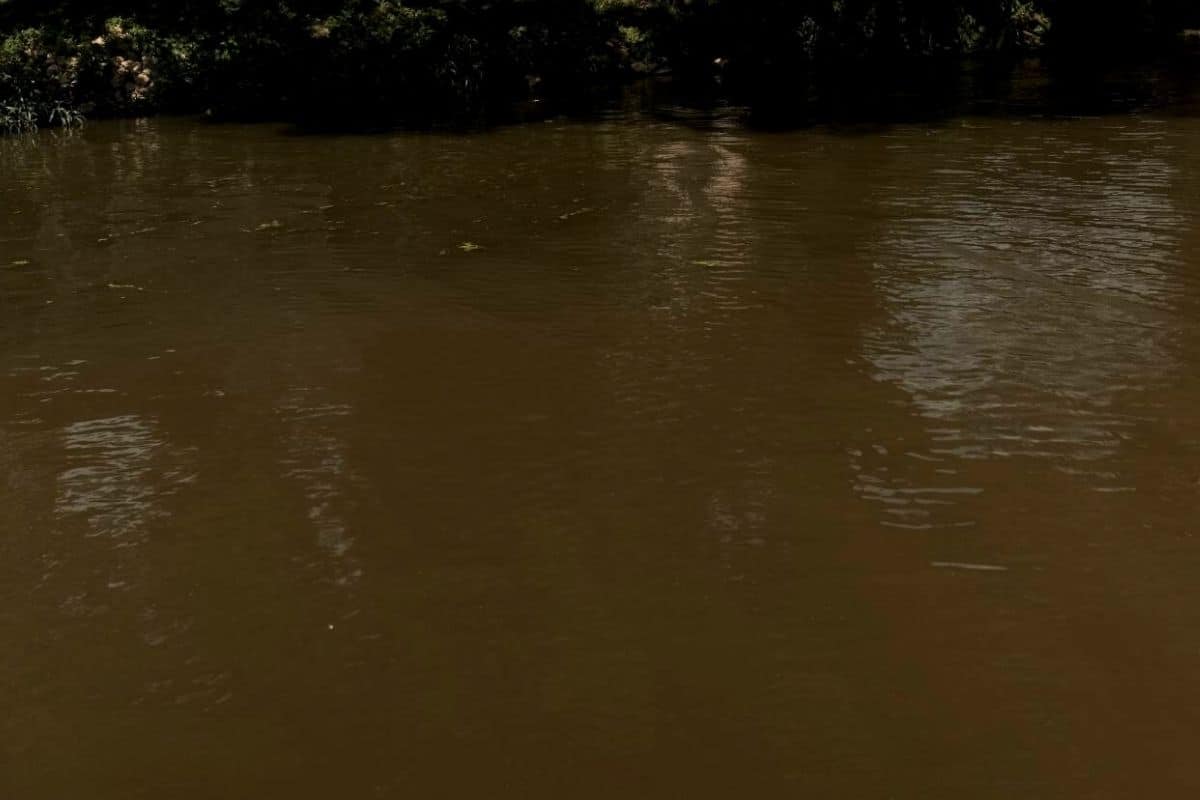Bass anglers are divided into two categories when it comes to murky or muddy water. Those who are used to it and it doesn’t bother them and those who hate it, but must deal with it at times.
When bass fishing in murky water, the fish will relate to hard structure. This will often position them tight to the shoreline and accessible to anglers.
I used to dread fishing murky or muddy water, but now that I understand how it positions bass, I actually will look forward to it.
How to Think About Fishing Murky Conditions
What happens when the electricity goes out? If the room we were in goes dark, our natural instinct is to use our sense of touch. We will reach a hand out and feel for something hard.
The bass do the same thing. This is especially true if the fishery normally has some clarity to it. These fish are not used to dingy conditions and will really position on hard structure.
For bass that are used to the low visibility, they are more apt to roam or pull off the hard structure some, but they will still stay much closer to it than their clear water counterparts.
The Positives of Fishing Murky Water
When the water is dirty, I know exactly where I am going to fish. Close to the shoreline and on the hardest surfaces I can find.
Sea walls, riprap, bridge pilings, docks, and rock are all high-percentage areas. I will also focus on wood if there are not other hard objects available.
As a bass angler, this is good news. It eliminates so much water. In fact, it even makes finding a starting point easier. Wherever I see hard structure, I know the odds are good bass will be there.
Casting Accuracy and Murky Water Conditions
This is so important. The strike zone of a bass in dirty water conditions is very small.
I’m talking inches.
When pitching a lure to a target, it needs to literally hit the target. If your bait drops 6 inches away, that may be too far to get the bass interested. If the lure hits a foot from the intended target in dirty water, that is almost a guarantee of no bite.
I have had many outings in dirty water conditions where this held true.
Hit the target and you may get a bite. Miss the target by a slight amount and it resulted in no bites almost every time.
If it takes repeated casts to one target to get the lure in the right place, that is OK. In fact, it is what you will have to do.
(Here is an article on improving casting accuracy with a baitcast reel.)

Lure Selection for Fishing Murky Water
When bass are holding close to structure, the lure selection process is important.
Think about using things like jigs and Texas rigs. These lures will get right along the hard structure and be less apt to hang up.
Solid colors work well because the bass will first sense the lure with their lateral line. Then they will zero in on it with sight.
A continuous solid color will offer the best profile for the bass to target
Popular thinking would stress options like black and black/blue. These work and have for years, but in underwater tests that I have done, I find solid white or white and chartreuse are much more visible than blacks.
I will definitely have both tied on, but I will start with solid white.
Another popular choice is a bladed jig or chatterbait. The extreme vibration can help the bass zero in on it.
(Here is an article on color selection for dirty water.)
The Importance of Fall Rate When Fishing Murky Water
Bass in these extreme water clarity conditions need as much time as possible to locate and zero in on the lure.
I will select lures and jig trailers that offer a bulkier profile and more surface area resisting the water as the bait falls. This is not the time to use lures with slender profiles that rocket to the bottom,
I will even downsize my lures. I find that ¼ oz jigs are terrific in dirty water. They fall much slower than that ½ oz flipping jig I may normally use.

Don’t Underestimate How Shallow Murky Water Bass Will Get
This is especially true when the fish are accustomed to water with more visibility.
I have fished for bass during the heat of summer in low visibility conditions and found them sitting in less than twelve inches of water. In fact, my trolling motor would keep banging into the bottom because of how shallow they were.
And I mean they were extremely tight to the structure. If that lure landed a couple of inches away from the rock I was targeting, there was never a bite.
Most anglers that day were missing the fish and never knew they were there. It is hard to fathom that super hot water would have bass that shallow. But they were.
Final Thoughts
When you take the positives of how murky and muddy water can position bass, it becomes a fun and exciting challenge.
When a bass angler can eliminate 99% of the water they are fishing it is always a good thing.
Good luck and be sure to encourage someone today. You never know how you may change their life forever.
Isaiah 6:8

